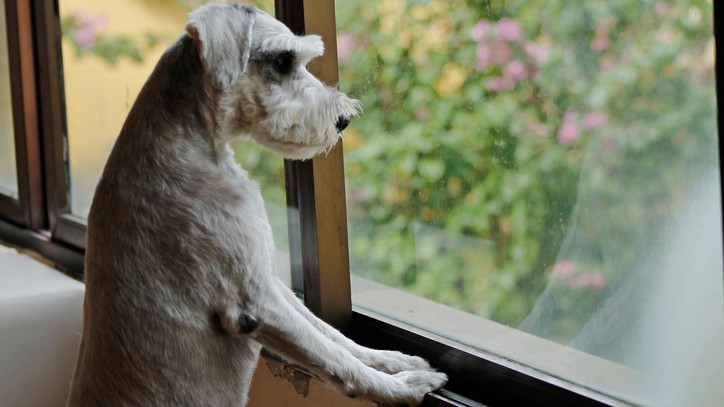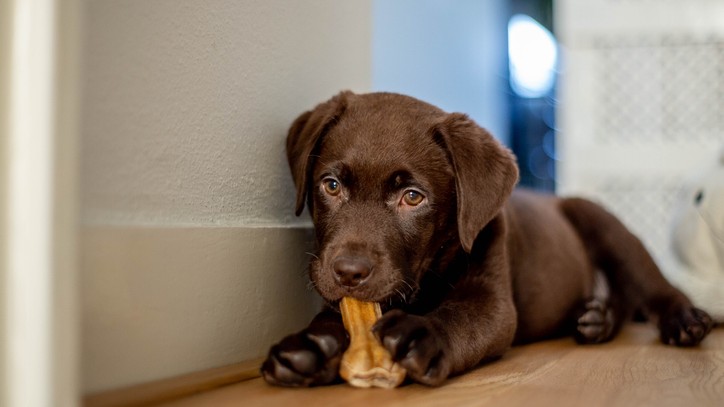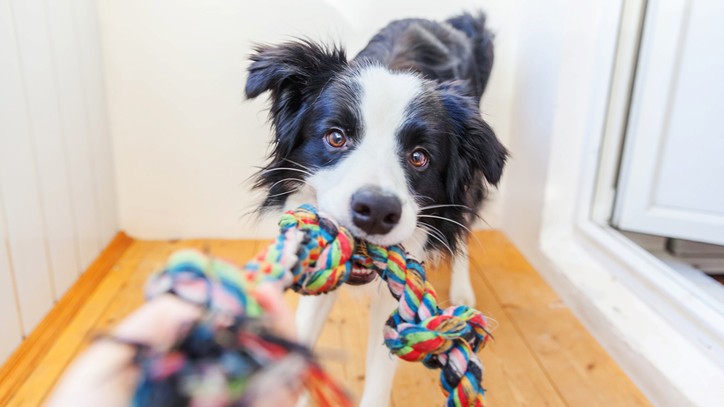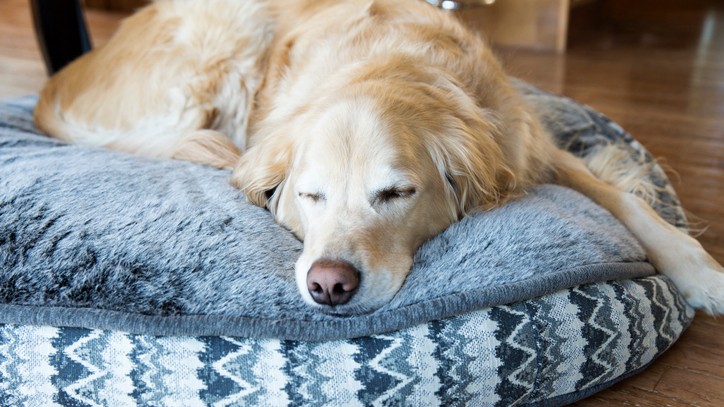Life after lockdown: Ease separation anxiety in dogs when returning to work
After all this time off, some separation anxiety in dogs is to be expected when you return to work – here's how to ease them into it the new normal

As Covid-19 restrictions ease and people start to return to work, separation anxiety in dogs is likely to be commonplace. After all, the last few months have been strange and difficult for most people, but for a lot of dogs they’ve been a joy; they’ve unexpectedly had their humans around all day every day.
If you and your dog have been enjoying hanging out at home, the day you start going back into work or heading out for other activities is unlikely to be an easy one. Moving back to your normal routine will be especially tricky if you’ve recently bought or adopted a puppy and they’ve grown up thinking you’re always around.
To make the change and separation less stressful for your both, here are some ways to teach or remind your dog that being alone is okay.
Start slowly
If you have a puppy, begin by giving them a toy and leaving the room for a few seconds. When you return, praise and treat them. You can gradually increase the amount of time you’re away from seconds to minutes.
Calmly praise and reward them if they’re quiet on your return. If they cry or whine avoid making a fuss – just go back a few stages and build up the amount of time more slowly. Putting a piece of clothing you’ve worn in their favourite place might help reduce anxiety.
The same principle can be applied to older dogs, but unless they have separation anxiety you should be able to jump straight to being in a different room for an hour or so at a time; for these dogs it’s more about preventing a sudden shock when you go back to work.
To remind them of the usual routine, you could even pick up your bag and keys and head out the front door for a few minutes before coming back in. No matter their age, the aim is to show your dog that they’re safe in the house and that you’ll always come back to them eventually.
Get the best advice, tips and top tech for your beloved Pets

Occupy their time
A dog left alone with nothing to do is far more likely to become stressed or bored, and to develop behaviours like barking and destroying furniture. Leave toys and puzzles for your dog to play with so they can entertain themselves, rather than spending all day waiting for you to come home.
Chews and treat-releasing puzzles will keep a dog’s attention – just make sure they’re safe and that there’s no risk of splintering or small pieces breaking off. Check out our list of the best dog chew toys to give yourself some ideas.
To cover up potentially stressful sounds like garbage trucks, car horns and other dogs barking, and to give your dog some sense of company, try leaving the TV or radio on in the background. Choose a calm station – nothing that’s likely to show an action movie or suddenly blast rock music.
If you want complete control over what plays, put together a playlist of classical music or calm podcasts. My Dog’s Favourite Podcast on Spotify is designed for exactly this purpose, with hours of soft music, stories and reassuring words.

Release some energy
Before you head out take your dog for a long walk or a jog, engage them in play or spend some time on their training. Giving them a mental and physical workout will let them release some of their energy before they’re left alone, reducing the chance that they’ll start ripping things up out of boredom and making it more likely that they’ll sleep part of the morning away. Make sure you do these activities at other times of the day too, though, or your dog will start to associate them with you going away.
The longer your dog naps during the day, the less time they have to spend missing you. Ideally, try and give them several comfortable places to sleep so they can move if a noise starts up near where they’re napping.

Keep an eye on them
For your dog’s wellbeing, and your own peace of mind, it’s helpful to be able to keep an eye on your dog while you’re out. A number of companies now sell cameras that link to apps specifically for this, some even with inbuilt speakers, so you can talk to your pets, but you can set up a simple webcam if you’re on a budget. Avoid watching compulsively, but check in every now and then to make sure all’s well in your absence.
Another option is to hire a dog walker or ask a friend to stop in at some point through the day. Even if it’s just to let them into the garden for 10 minutes, another person visiting the house breaks up the time that your dog has to spend alone. Your friend or dog walker will also be able to check your dog’s ok, make sure they have water and contact you if there’s anything you need to know.
Victoria is a writer, author and communicator with a background in science and has recently completed an MSc in Science Communication. She also has a degree in Evolutionary Biology and has written for magazines including World of Animals, How It Works and Science+Nature. She grew up with rabbits and a spaniel, and has had her horse, Bernie, for 11 years.

